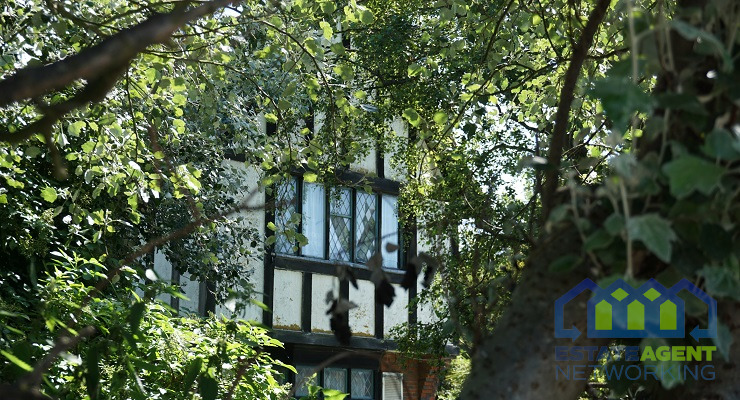Blending Heritage and Innovation: Residential Architects in London & Winchester
As cities rich in history and culture, London and Winchester present unique challenges and opportunities for residential architects. Balancing the preservation of historical character with the demands of modern living requires creativity and expertise. This blend of heritage and innovation is what distinguishes the top Winchester & London residential architects, allowing them to create spaces that honor the past while embracing the future.
The Historical Context
London, a bustling metropolis, is a tapestry of architectural styles, from the medieval Tower of London to the futuristic Shard. Its diverse neighborhoods showcase Georgian terraces, Victorian townhouses, and contemporary skyscrapers. The city’s architectural landscape tells a story of constant evolution, where tradition and modernity coexist.
Winchester, on the other hand, is a city steeped in history. As one of the oldest cities in England, it boasts a wealth of historic buildings, including the iconic Winchester Cathedral. The city’s charm lies in its preservation of medieval and Tudor architecture, offering a more intimate yet equally challenging environment for architects.
The Role of Residential Architects
In both cities, residential architects play a crucial role in shaping how people live and interact with their environments. Their work involves designing homes that are not only functional and aesthetically pleasing but also respectful of historical context. This requires a deep understanding of architectural history, local regulations, and contemporary design principles.
Balancing Heritage and Modernity
Understanding Historical Context
A successful blend of heritage and innovation begins with a thorough understanding of historical context. Architects must research the architectural history of a site, considering factors such as original materials, construction techniques, and historical significance. This knowledge informs their design decisions, ensuring that new additions complement the existing structure.
Navigating Planning Regulations
Both London and Winchester have strict planning regulations aimed at preserving historical areas. London & Winchester architects must navigate these regulations, often working closely with conservation officers to ensure that their designs meet the required standards. This can involve negotiating compromises to maintain the integrity of a building while introducing modern elements.
Incorporating Modern Design Elements
While respecting historical context, architects also strive to incorporate modern design elements that enhance functionality and comfort. This can include the use of contemporary materials, sustainable technologies, and innovative space planning. The challenge lies in integrating these elements seamlessly into the existing structure without compromising its historical character.
Case Studies
1. London: A Georgian Terrace Revived
In the heart of London, a Georgian terrace house underwent a remarkable transformation. The original structure, with its elegant façade and classical proportions, was meticulously restored. The architects preserved key historical features, such as the cornices and sash windows, while introducing modern amenities and an open-plan layout. A contemporary extension at the rear of the property, featuring floor-to-ceiling glass, provides a striking contrast to the traditional front, allowing natural light to flood the interior.
2. Winchester: A Tudor Cottage Reimagined
In Winchester, a Tudor cottage presented a unique challenge. The architects sought to preserve the charming half-timbered exterior while modernizing the interior for a growing family. The solution involved a sensitive restoration of the façade and the addition of a contemporary glass extension at the back. This extension houses a spacious kitchen and living area, creating a seamless connection between indoor and outdoor spaces. The use of timber and stone in the new addition pays homage to the original structure, ensuring a harmonious blend of old and new.
The Future of Residential Architecture
As the demands of modern living continue to evolve, residential architects in London and Winchester must remain at the forefront of innovation. Key trends shaping the future of residential architecture include:
Sustainability and Energy Efficiency
The integration of sustainable design practices is becoming increasingly important. Architects are exploring ways to reduce the environmental impact of buildings through energy-efficient technologies, renewable materials, and passive design strategies. In both London and Winchester, architects are finding creative solutions to retrofit historical buildings with modern energy-saving technologies, ensuring their longevity and relevance.
Smart Home Technology
The rise of smart home technology is transforming the way people interact with their living spaces. Architects are incorporating intelligent systems that enhance convenience, security, and energy efficiency. These technologies allow homeowners to control lighting, heating, and security remotely, offering a level of customization and comfort previously unimaginable.
Adaptive Reuse
Adaptive reuse is gaining popularity as a sustainable approach to architecture. By repurposing existing structures for new functions, architects can preserve historical character while meeting modern needs. This trend is particularly relevant in London and Winchester, where architects are finding innovative ways to breathe new life into historic buildings, transforming them into vibrant residential spaces.
Challenges and Opportunities
While blending heritage and innovation presents numerous challenges, it also offers exciting opportunities for architects to showcase their creativity and expertise.
Some of the key challenges include:
Balancing Preservation and Progress
Achieving the right balance between preservation and progress requires a nuanced approach. Architects must carefully consider which elements of a building should be preserved and which can be adapted to meet contemporary needs. This delicate balance is essential to maintaining the historical integrity of a structure while allowing for modern living.
Engaging with the Community
Successful residential architecture involves engaging with the local community and understanding their needs and aspirations. Architects must consider how their designs will impact the surrounding area and work collaboratively with residents, planners, and other stakeholders to ensure a positive outcome.
Pushing the Boundaries of Design
The fusion of heritage and innovation provides an opportunity for architects to push the boundaries of design. By experimenting with materials, technologies, and spatial configurations, architects can create homes that are both timeless and cutting-edge. This requires a willingness to take risks and explore new possibilities.
Conclusion
Blending heritage and innovation in residential architecture is a dynamic and rewarding endeavor. In cities like London and Winchester, where history and modernity intersect, architects have the unique opportunity to create spaces that honor the past while embracing the future. By respecting historical context, navigating planning regulations, and incorporating modern design elements, residential architects are shaping the homes of tomorrow. As they continue to innovate and adapt to changing needs, they are ensuring that these cities remain vibrant and livable for generations to come.









